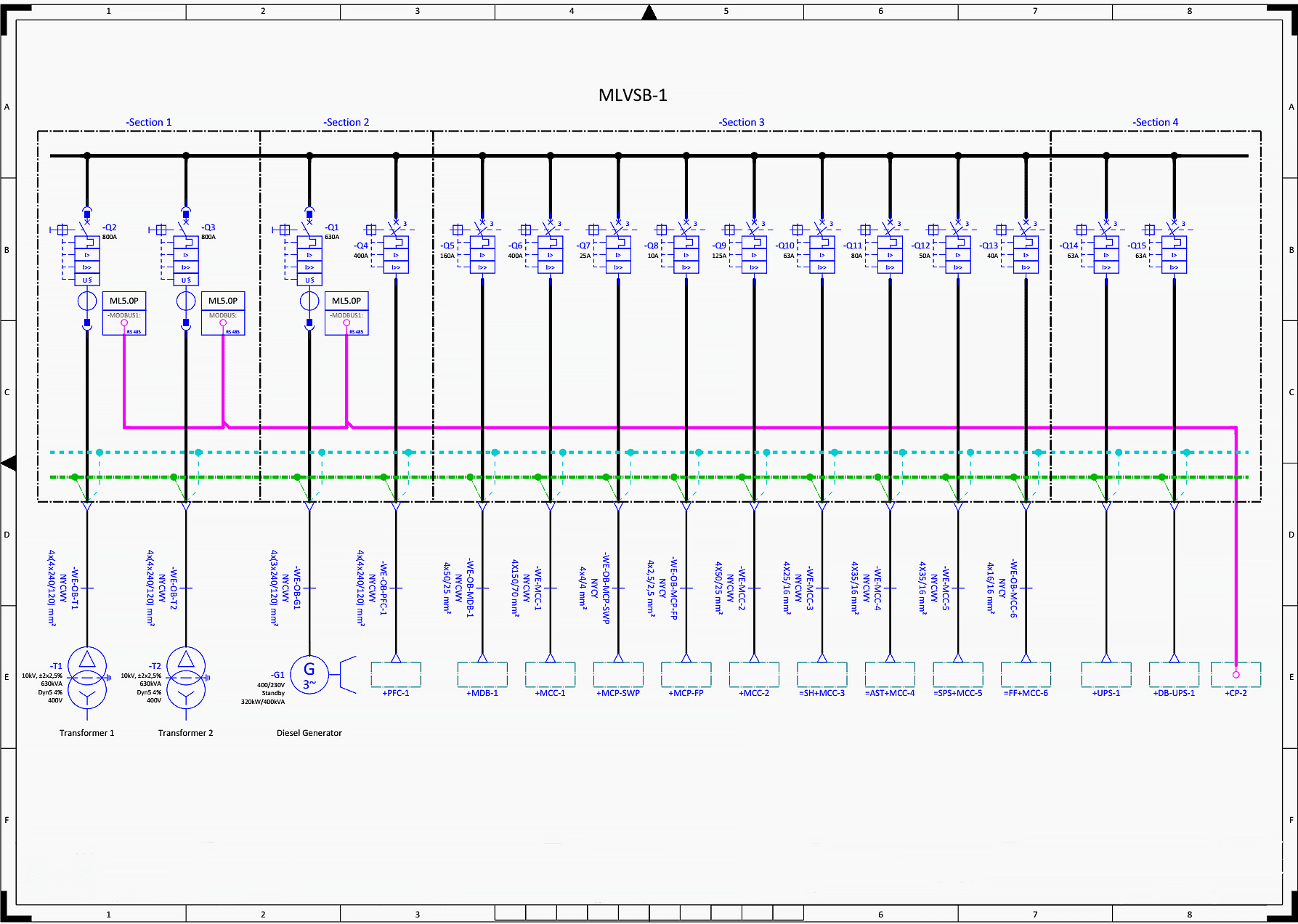


The piping isometrics are used for the stress analysis and it is very useful for the draftsmen to create the shop fabrication spool drawings. The isometric drawings are really helpful for the complex or the larger piping system. Mostly the piping isometrics are created from orthographic drawings and this will be really useful for engineers. The finished isometric drawings are easier to understand in practical format than an orthographic line drawing. We can use either the single line or double line method. These drawings are used in pipelines that have bent more than in one place. This diagram shows both the horizontal and vertical planes. This drawing is widely used for industries because it can be drawn easily and it would display the object in a realistic way. So in this drawing three sides of an object can be viewed. The isometric drawing is a type of piping drawing and it shows the piping system in three dimensions (length, width, & depth). The orthographic diagram shows only one side and because of that multiple drawings are required to show the complete piping arrangements. This type of drawing is mostly used for complex piping systems. Mostly the double line drawings are used for applications such as catalogs, where visual appearance is more than the drawing time. The single-line method is mostly used where speed is an important factor. This type of drawing is mostly a single line drawing and it is drawn by drawing the centerline of the pipe as a thick line and add valves and fittings, or double line drawings, where we can draw each valve and fittings. This type of drawing would show single pipes either straight or bent in one plane. This diagram acts as a guide for the process flow diagram. This diagram can be considered as a theoretical or conceptual layout of a system and its operations. The equipment in the piping network is represented by simple shapes such as rectangles, circles, etc. This diagram is a simplified diagram of the piping system at the initial stages of the design process. The block flow diagram is also called a schematic diagram and it is a non-scaled single line diagram. It is also useful for conveying the major piece of equipment.It is very useful to convey the heat and material balances.The process flow diagram conveys the major processing steps represented by the equipment A PFD diagram would contain the process piping, major equipment symbol names and identification numbers, control valves and valves that affect the operation of the system, interconnection with other systems, major bypass and recirculation lines, the composition of fluids, and system ratings operation values like maximum flow temperature and pressure. This type of piping diagram won’t display minor components, piping systems, piping ratings, and designations. This diagram shows the relationship between the components in a system, this type of diagram tabulates the process design values for different operating mode components. Red – Fire protection material WHAT ARE THE TYPES OF PIPING DIAGRAM In a piping arrangement all the equipment, instrument connections with the tag numbers will be shown in a piping arrangement, important details will be on large scale. The primary and the secondary beams are shown as utility stations so that the most proper route for the utility can be determined. The process equipment and piping have priority over the piping arrangement. The vertical lengths of the pipe can be calculated by using elevations, while the horizontal lengths are calculated by using north-south and east-west coordinates. The pipe lengths are determined by calculations using coordinates and elevations. Pipe diameter contents and identification number.What are the requirements for a piping drawing? By the help of these drawings and also with the project installation specifications would provide good guidelines to complete the piping system. There are different types of piping diagrams and they are process flow diagrams, piping and instrumentation diagram, orthographic pipe drawing, piping isometrics, and block flow diagrams. Piping diagrams are designed in a way that will be understandable for non-technical personnel. The drawings would help to speed up the fabrication and erection work at the site. These drawings are schematic representations and they would define functional relationships in a piping system. The main purpose of a piping drawing is to communicate the information in a simple way.


 0 kommentar(er)
0 kommentar(er)
